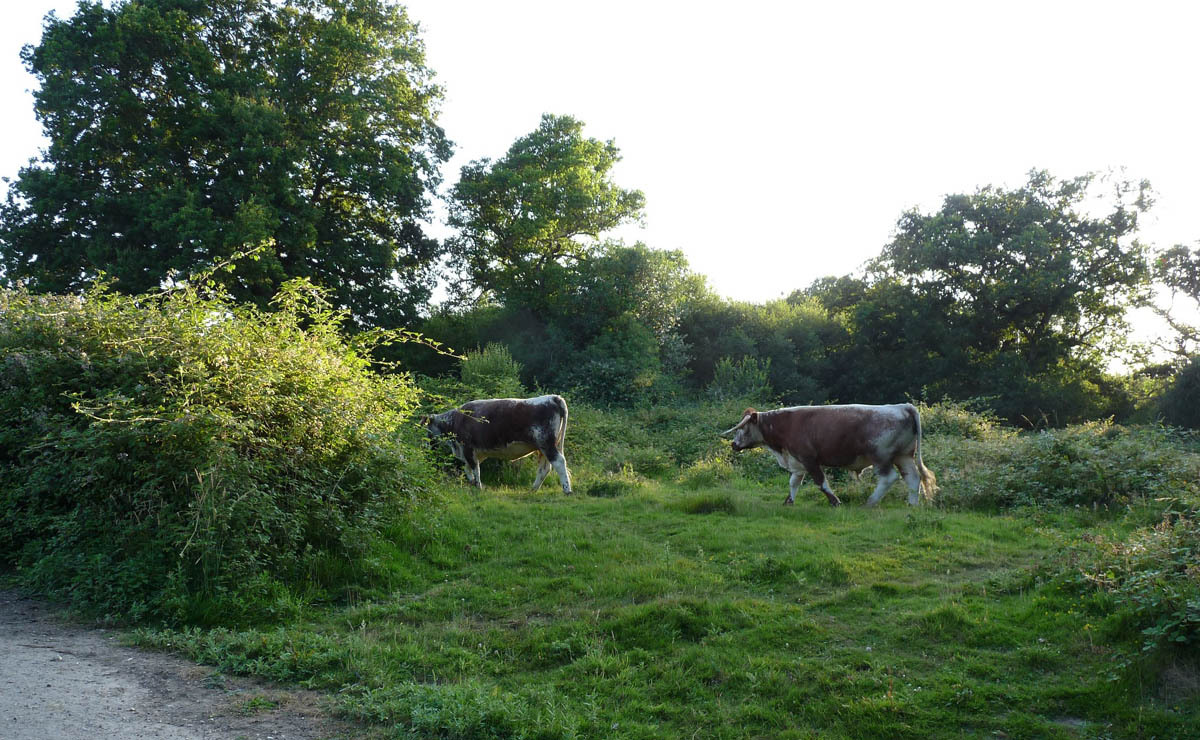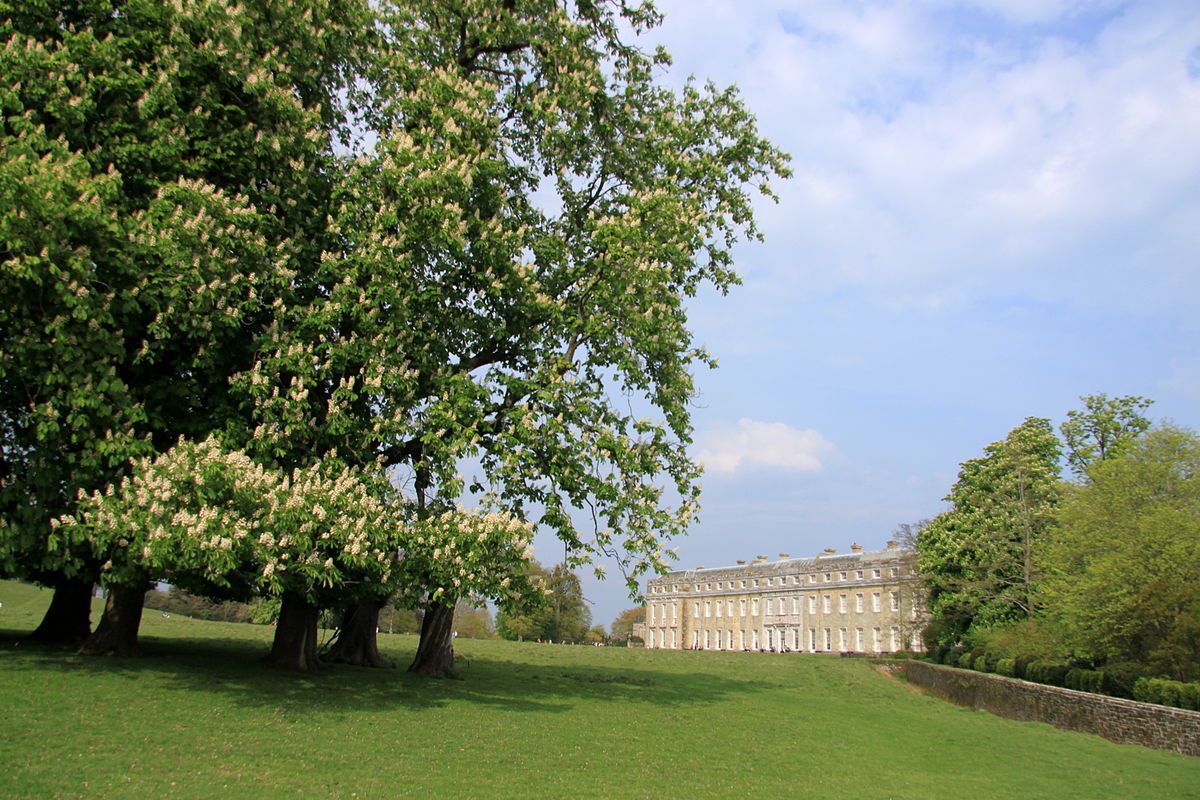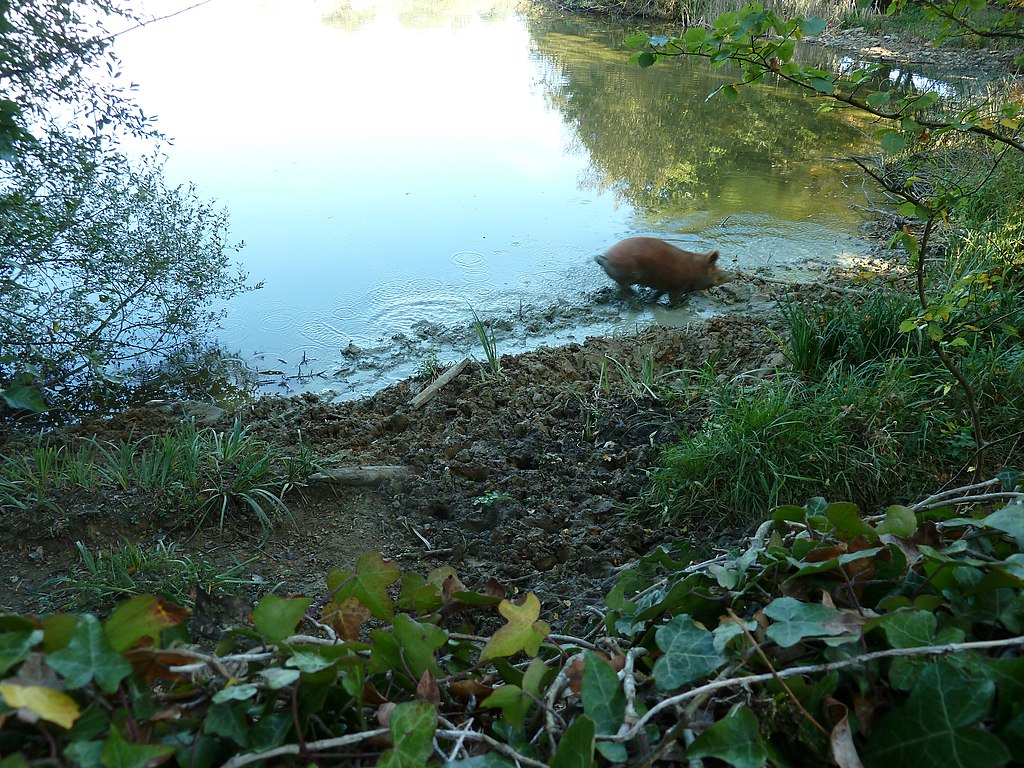
The contrast was dramatic and instructive. Only a day after walking around the deer park at Petworth House, I took a footpath through the grounds of Knepp Castle, a pioneering ‘rewilding’ project in the heart of Sussex. The two estates are less than half an hour apart by car, but a world apart in terms of underlying philosophy.
Petworth Park is owned and managed by the National Trust. It is one of the finest examples of a ‘natural’ English landscape, though in reality it is far from natural. The lakes, rolling grassland and attractively positioned clumps of trees were designed and engineered by Lancelot ‘Capability’ Brown in the late 1750s, and have been carefully maintained ever since. It is a work of art fashioned from the natural world. Though a living landscape, essentially it is frozen in time.

The Knepp Wildland, as it calls itself, is a far more recent creation. Its development began when the owners decided that it was not possible to farm their 3,500 acres profitably using traditional methods. They began to move to a more extensive free-range approach and, over the last 20 years, have blocked drainage channels and removed fences and gates across the estate.
While the landscape at Petworth was shaped by human effort, the landscape engineers at Knepp are large herbivores – Longhorn cattle, Exmoor ponies and red, fallow and roe deer. It is their browsing, grazing and trampling through the countryside that is determining the mix and structure of vegetation. The outcome of this interaction between plants and animals cannot be predicted in detail and is still evolving. In contrast to the tidy contours of Petworth, Knepp seems messy, even ugly, and uncared for.
The development of the house and formal gardens at Petworth were influenced by the experience of aristocrats on the European Grand Tour. Knepp also took inspiration from a European example – the Oostvaardersplassen reserve in the Netherlands, where some 58 square miles of reclaimed polder land has been set aside for nature. Deer and primitive breeds of cattle and horses were introduced to help maintain open areas for the benefit of migratory birds, and were allowed to live without human intervention.
In the absence of large predators, the numbers of grazing animals in the Dutch reserve increased substantially, leading, in the winter of 2017-18, to large numbers starving to death, often in full view of the public. There was an outcry in the Netherlands, which forced a change of policy. In a similar way, numbers of deer and cattle have increased substantially at Knepp, and are now controlled through regular culling.
Although an artificial creation, the park at Petworth has considerable wildlife interest. Of particular importance are the veteran trees, some estimated to be over 1,000 years old. England has a higher proportion of ancient trees than anywhere else in Europe, and they are known to provide a unique habitat for many species of invertebrate. Careful management to maintain the appearance of the park helps maintain its distinctive ecology.

At Knepp, by contrast, the ecological impact of the new regime is uncertain. There have been spectacular successes. Nightingales, declining in numbers elsewhere in England, have thrived, almost certainly because of the growth of dense scrub. Turtle doves, even more threatened, have become common, but for reasons that are not well understood. Knepp is now one of the best places to see the striking purple emperor butterfly, aided by strong regrowth of sallow underneath oak trees. As the site evolves without human direction, however, some of these gains may prove to be transitory. What would happen to the butterflies, for example, if browsing animals ate too much of the sallow?
Knepp is a fascinating example of what can happen if nature is left to itself. In little over a decade, formerly cultivated fields have come to resemble parts of the African bush, and formerly scarce species have begun to thrive. What, however, are the lessons for conservation practice more generally?
The Knepp experiment has only been possible with the help of public funding through the Countryside Stewardship scheme, which paid, for example, for nine miles of deer fencing round the perimeter. Under the new Environmental Land Management Scheme (ELMS), which is gradually replacing the EU Common Agricultural Policy (CAP), the ‘Basic Payments’ which farmers received simply for owning land are being phased out, and replaced by payments for ‘public goods’ such as nature conservation. There are, however, concerns that farmers are still not clear about how the scheme will work, or how the focus on environmental gains can be reconciled with sustainable food production. There is a tension between the two that can only increase with global food shortages.
There is also a question of scale. Even the huge reserve at Oostvaardersplassen is too small to function naturally without human intervention. Allowing nature free rein to shape the environment does not seem feasible anywhere in lowland Britain, or indeed over much of Europe. On the other hand, there is a growing recognition that seeking to protect wildlife in isolated nature reserves is not enough. The talk is currently of the need to support nature recovery on a landscape scale.
The ELMS scheme recognises the need for interventions to support nature on three levels: that of the individual farm, groups of farmers co-operating to achieve shared objectives and “Landscape Recovery […] aimed at “landowners and managers who want to take a large-scale and long-term approach to producing environmental and climate outcomes through land use change and habitat and ecosystem restoration.”
An indication of the scale of these ambitions can be gleaned from the announcement of a new super nature reserve in Somerset, connecting the wetlands of the Levels to the coastal marshes at Steart Point, and including six existing reserves.
Plans are also well advanced for a similar project along the whole of the Mendip scarp, from the city of Wells to the coast at Brean Down, covering land currently managed by a range of conservation organisations as well as private owners. While the scope of the project is clear, however, the nature of the interventions needed to support nature recovery are not.
Petworth and Knepp, in different ways, offer insights into conservation practice, but not models that can be replicated at scale. It is no more possible to envisage large herds of free-ranging deer and cattle reshaping the Somerset countryside, than it is to see it mown and managed like an 18th century ideal of English parkland. Quite how it is to be managed, however, is much more difficult to say.





